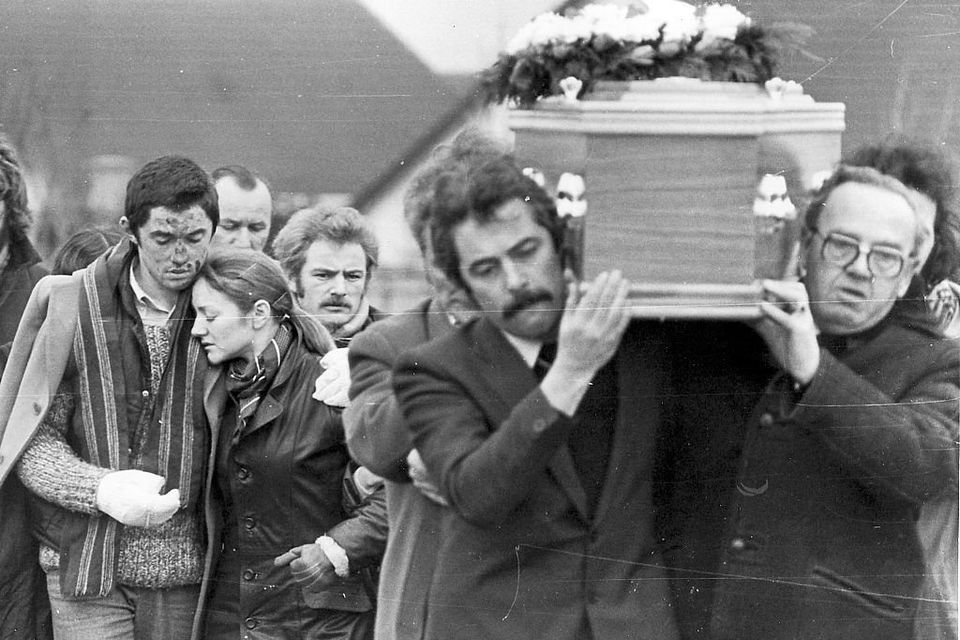Editorial: Must it always take a tragedy to stir us to action?
A funeral in 1981 at St Fintan's Cemetery, Sutton, of one of the young victims of the Stardust tragedy. Photo: Tom Burke
The finding of the Stardust inquests presents an opportunity to review existing regulations on fire safety considering the significant changes in building infrastructure since the current laws were introduced in response to the tragedy that killed 48 people in 1981.
In the more than 40 years since the Stardust disaster, buildings in this county have become larger and more complex and housing is being built more densely. Also, the materials used are becoming lighter, more combustible, more toxic and less forgiving of poor design, unskilled workmanship and inadequate testing and control systems.
This warning was sounded by Orla Hegarty of the UCD School of Architecture in the aftermath of the Grenfell Tower tragedy in London, which claimed the lives of 72 people in 2017. At the time, she warned that a review of fire safety issues by the government here in the wake of Grenfell had been “very limited”.
“The implications of the catastrophic systems failure at Grenfell warranted a much broader review and risk assessment” in Ireland, she told an Oireachtas committee hearing in 2018.
As Frank McDonald reports in this newspaper today, Ms Hegarty has pointed to a liberal regime for high-rise buildings introduced here a year after Grenfell. She said long corridors and single- staircase escape routes pose serious fire risks.
In the past decade, evidence has emerged of housing defects caused by the legacies of poor construction design, workmanship and materials used during the Celtic Tiger boom — most notably the pyrite and mica scandals that have impacted significantly on the lives of many people.
In retrospect, a mistake was made in 2012 when Ireland’s statutory Building Regulations Advisory Board was disbanded, allowing each local authority to act as a separate building control authority; as a consequence, there was no consistent response.
Under Housing for All, the State’s housing plan to 2030, a Building Regulations Advisory Body consisting of the construction industry, private and public, is slated to be re-established to advise on matters relating to regulations.
Since Housing for All was published in September 2021, the Government has introduced certain regulations aimed at providing for the safety and welfare of people in and about buildings. However, regulations are only as effective as the level of inspection. An effective building control system cannot function unless it is underpinned by workable enforcement mechanisms.
The experience of the Stardust families informs us again that we should never lose sight of why the regulation of building standards is so important. Building control is not an abstract or technical problem. Its core principle is to ensure safe, accessible and sustainable buildings.
In the aftermath of the Stardust inquests, a case now exists that hospitals, airports, schools, shopping centres, student housing and hotels be examined, as should thousands of apartments (many of timber-frame construction built during the boom) where residents have been calling for a national audit of fire safety risks.
It must not take another tragedy to act.
Warnings have been sounded. We cannot conclude systems are fit for purpose when people may still be living in dangerous buildings.
Join the Irish Independent WhatsApp channel
Stay up to date with all the latest news















